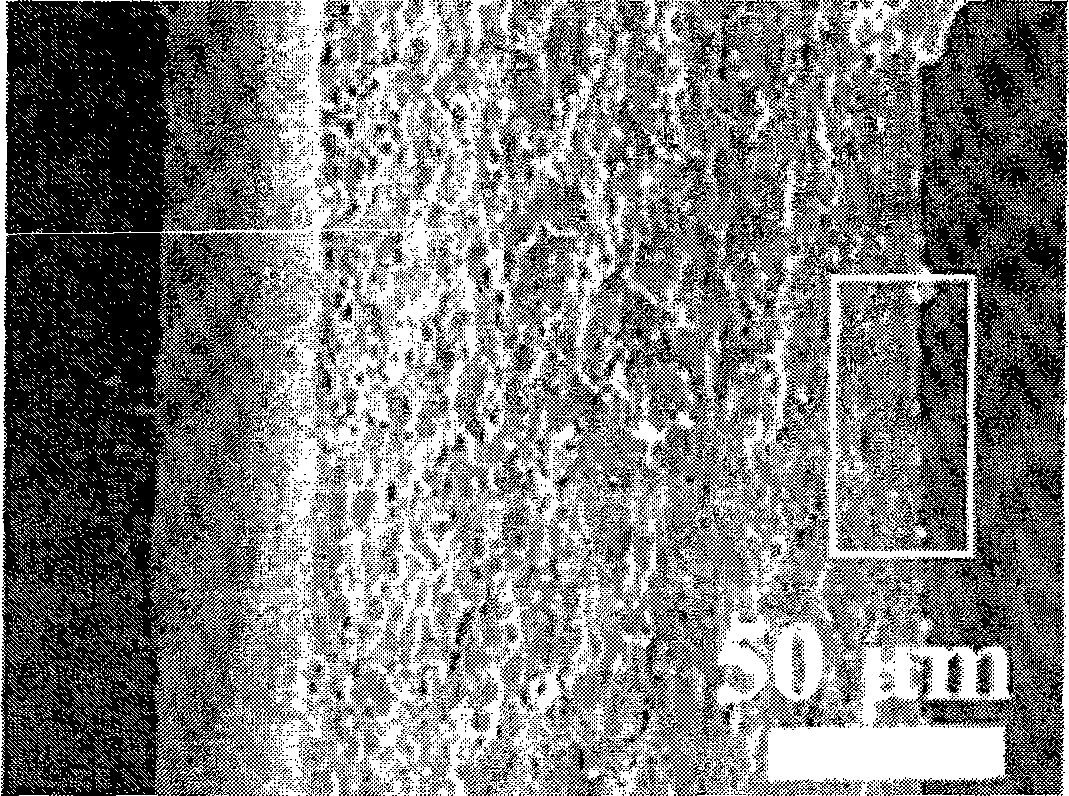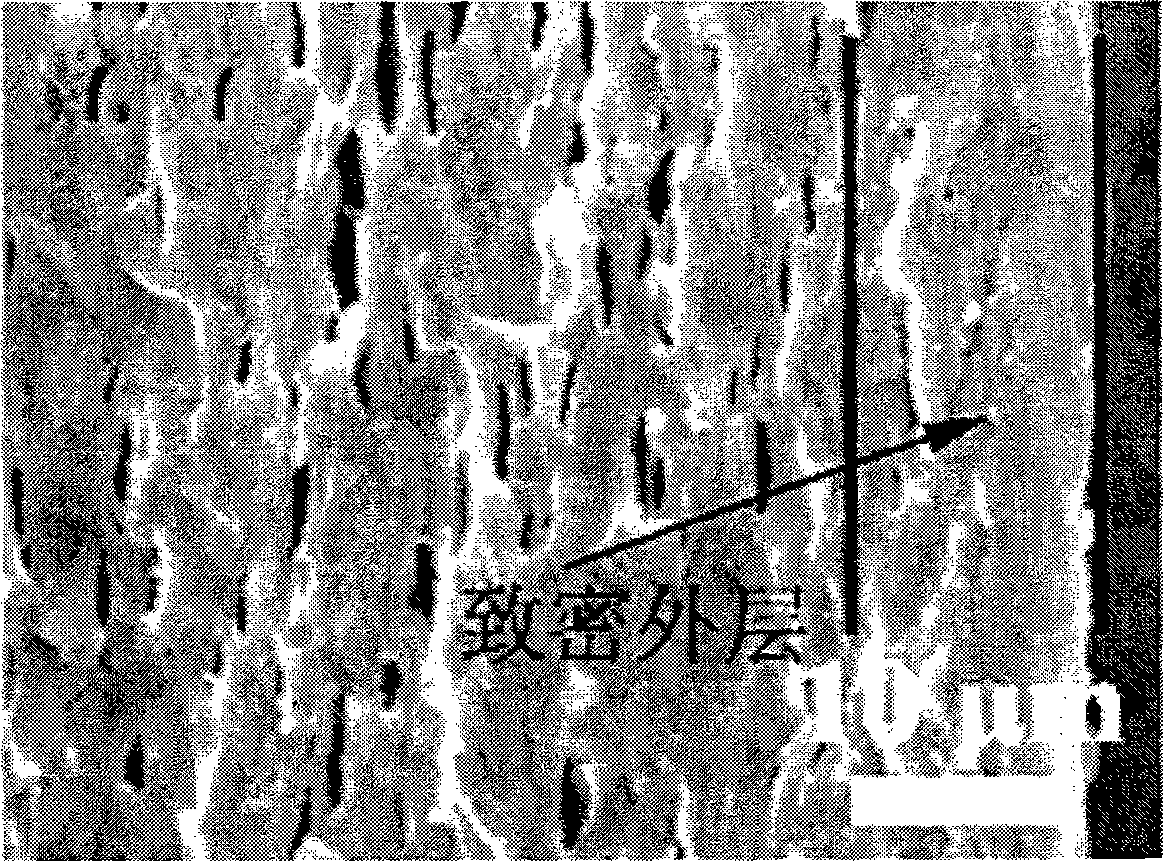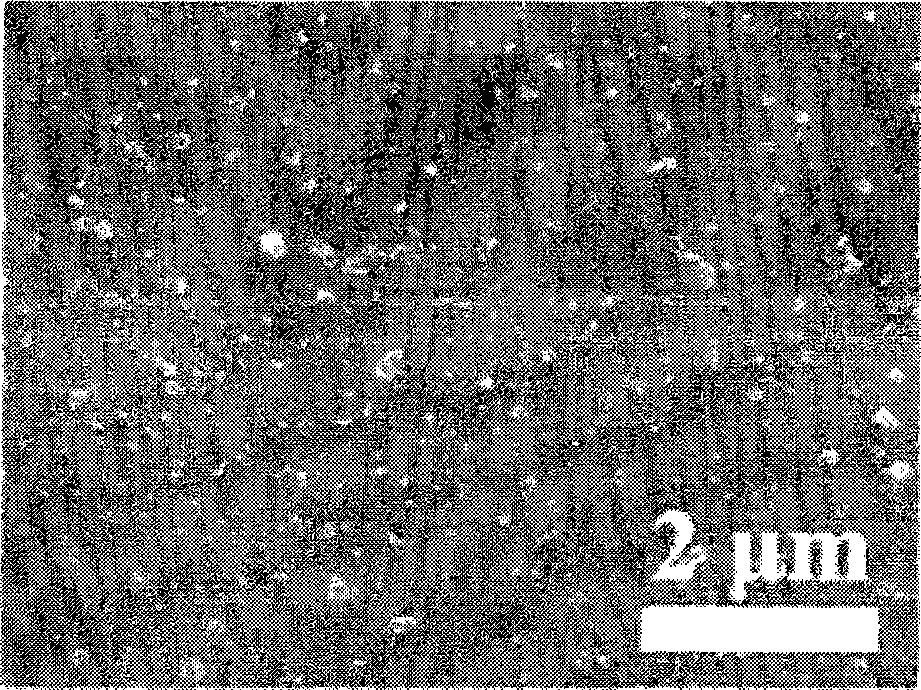Gelatin/calcium phosphate asymmetry medicine releasing coating layer and preparation method thereof
A calcium phosphate, asymmetric technology, applied in coating, medical science, prosthesis, etc., can solve the problem of not achieving uniform drug release, and achieve the effect of reducing bacterial infection rate, preventing and treating postoperative infection
- Summary
- Abstract
- Description
- Claims
- Application Information
AI Technical Summary
Problems solved by technology
Method used
Image
Examples
Embodiment 1
[0042] A Ti-6Al-4V alloy sheet (50mm×20mm×1mm) was used as the substrate. Before coating, the substrate was polished with silicon carbide sandpaper (400-4000), and ultrasonically cleaned in acetone, ethanol and deionized water for 15 minutes. Then soak in a solution containing 2ml HF, 4ml HNO 3 and 1000ml deionized water solution for passivation for 10 minutes, washed with water, and dried. Formulated with 0.5M Ca(NO 3 ) 2 , an aqueous solution of 1% (W / W) PEG-2000, and the pH value of the solution was adjusted to 10 with ammonia water. Prepare 0.5M (NH 4 ) 2 HPO 4 aqueous solution, and the pH of the solution was adjusted to 10 with ammonia water. Subsequently, the diammonium hydrogen phosphate solution was slowly added dropwise to the calcium nitrate solution with vigorous stirring, and the Ca / P molar ratio was maintained at 1.67. After the diammonium hydrogen phosphate solution was added dropwise, the reaction solution continued to age for 3 hours. Finally, the prod...
Embodiment 2
[0047] Ti-6Al-4V alloy sheet (50mm×20mm×1mm) was used as the substrate. Before coating, the substrate was polished with silicon carbide sandpaper (400-4000), and ultrasonically cleaned in acetone, ethanol and deionized water for 15 minutes. Then soak in the water containing 2mlHF, 4mlHNO 3 and 1000ml deionized water solution for passivation for 10 minutes, washed with water, and dried. Formulated with 0.5M Ca(NO 3 ) 2 , an aqueous solution of 1% (W / W) PEG-2000, and the pH value of the solution was adjusted to 10 with ammonia water. Prepare 0.5M (NH 4 ) 2 HPO 4 aqueous solution, and the pH of the solution was adjusted to 10 with ammonia water. Subsequently, the diammonium hydrogen phosphate solution was slowly added dropwise to the calcium nitrate solution with vigorous stirring, and the Ca / P molar ratio was maintained at 1.67. After the dropwise addition, the product was filtered, washed 3 times with water, and washed 2 times with ethanol. The filter cake was placed in...
Embodiment 3
[0052] A Ti-15Mo alloy sheet (50mm×20mm×1mm) was used as the substrate. Before coating, the substrate was polished with silicon carbide sandpaper (400-4000), and ultrasonically cleaned in acetone, ethanol and deionized water for 15 minutes. Then soak in the water containing 2mlHF, 4mlHNO 3 and 1000ml deionized water solution for passivation for 10 minutes, washed with water, and dried. Formulated with 0.5M Ca(NO 3 ) 2 , an aqueous solution of 1% (W / W) PEG-2000, and the pH value of the solution was adjusted to 10 with ammonia water. Prepare 0.5M (NH 4 ) 2 HPO 4aqueous solution, and the pH of the solution was adjusted to 10 with ammonia water. Subsequently, the diammonium hydrogen phosphate solution was slowly added dropwise to the calcium nitrate solution with vigorous stirring, and the Ca / P molar ratio was maintained at 1.67. After the diammonium hydrogen phosphate solution was added dropwise, the reaction solution continued to age for 3 hours. Finally, the product wa...
PUM
| Property | Measurement | Unit |
|---|---|---|
| Thickness | aaaaa | aaaaa |
| Thickness | aaaaa | aaaaa |
| Concentration | aaaaa | aaaaa |
Abstract
Description
Claims
Application Information
 Login to View More
Login to View More - R&D
- Intellectual Property
- Life Sciences
- Materials
- Tech Scout
- Unparalleled Data Quality
- Higher Quality Content
- 60% Fewer Hallucinations
Browse by: Latest US Patents, China's latest patents, Technical Efficacy Thesaurus, Application Domain, Technology Topic, Popular Technical Reports.
© 2025 PatSnap. All rights reserved.Legal|Privacy policy|Modern Slavery Act Transparency Statement|Sitemap|About US| Contact US: help@patsnap.com



